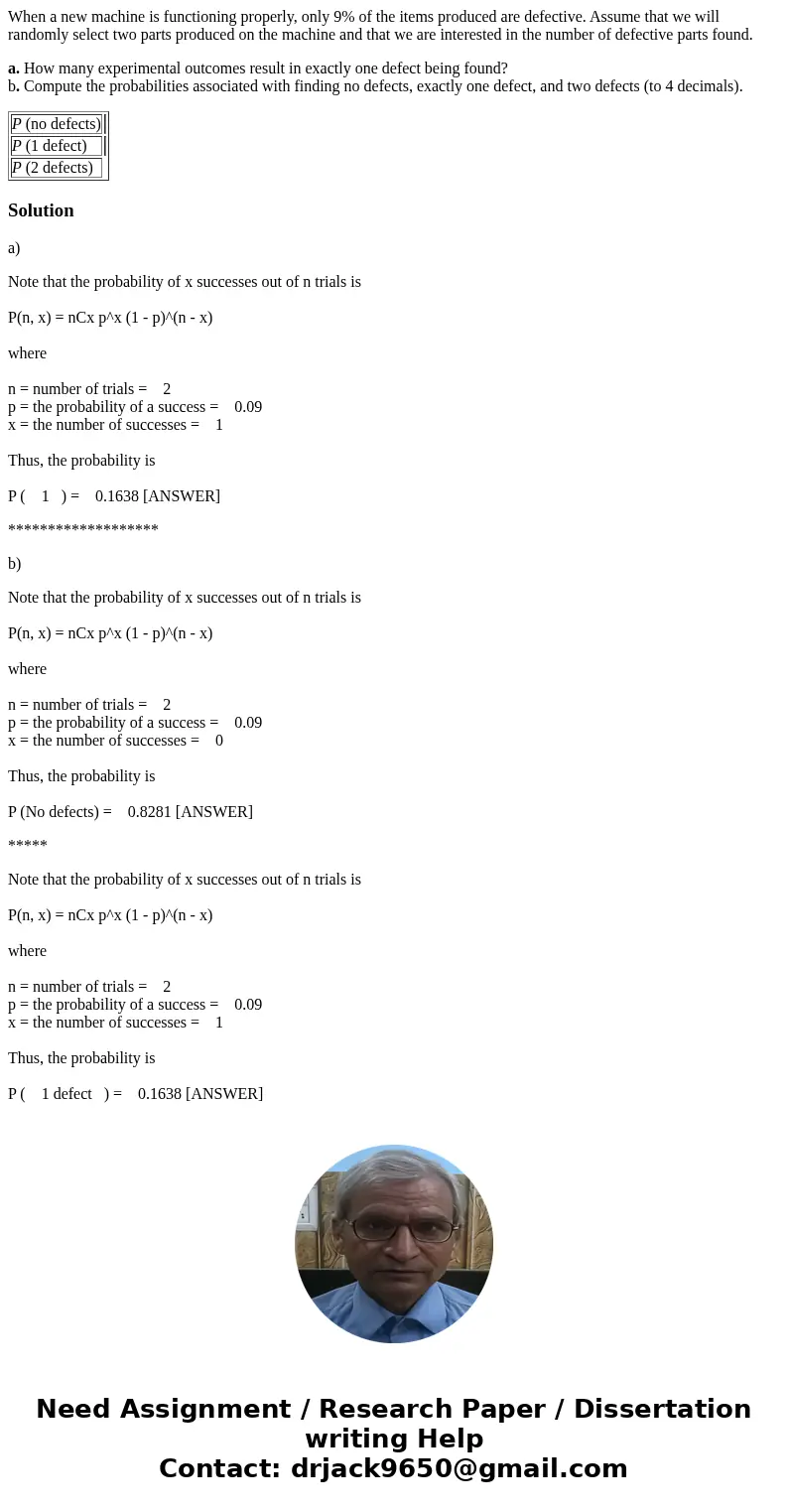When a new machine is functioning properly only 9 of the ite
When a new machine is functioning properly, only 9% of the items produced are defective. Assume that we will randomly select two parts produced on the machine and that we are interested in the number of defective parts found.
a. How many experimental outcomes result in exactly one defect being found?
b. Compute the probabilities associated with finding no defects, exactly one defect, and two defects (to 4 decimals).
| P (no defects) | |
| P (1 defect) | |
| P (2 defects) |
Solution
a)
Note that the probability of x successes out of n trials is
P(n, x) = nCx p^x (1 - p)^(n - x)
where
n = number of trials = 2
p = the probability of a success = 0.09
x = the number of successes = 1
Thus, the probability is
P ( 1 ) = 0.1638 [ANSWER]
*******************
b)
Note that the probability of x successes out of n trials is
P(n, x) = nCx p^x (1 - p)^(n - x)
where
n = number of trials = 2
p = the probability of a success = 0.09
x = the number of successes = 0
Thus, the probability is
P (No defects) = 0.8281 [ANSWER]
*****
Note that the probability of x successes out of n trials is
P(n, x) = nCx p^x (1 - p)^(n - x)
where
n = number of trials = 2
p = the probability of a success = 0.09
x = the number of successes = 1
Thus, the probability is
P ( 1 defect ) = 0.1638 [ANSWER]
*******
Note that the probability of x successes out of n trials is
P(n, x) = nCx p^x (1 - p)^(n - x)
where
n = number of trials = 2
p = the probability of a success = 0.09
x = the number of successes = 2
Thus, the probability is
P ( 2 defects ) = 0.0081 [ANSWER]

 Homework Sourse
Homework Sourse